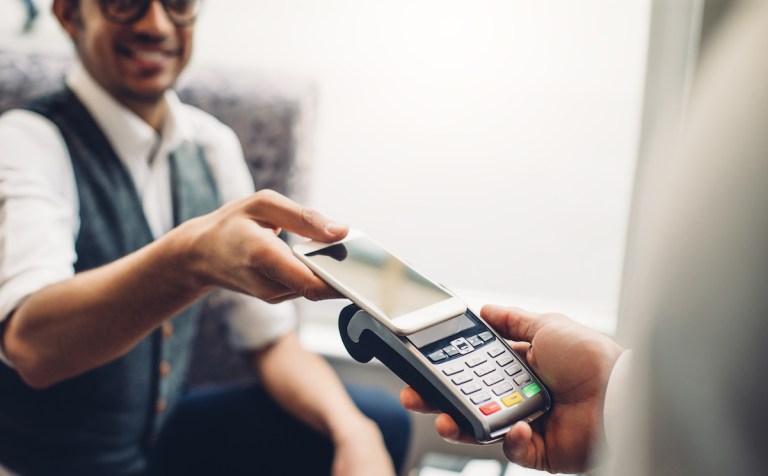India, traditionally reliant on cash, embarked on a digital payments journey 15 years ago.
The process was marked by key milestones like the introduction of the instant Unified Payments Interface (UPI) in 2016. The 2016 demonetization further accelerated the transition to digital payments, leveraging the existing trend of Indian citizens using mobile phones for various transactions.
The country is one of six studied in the third annual Global Digital Shopping Index, a PYMNTS Intelligence and Cybersource collaboration, for which more than 13,300 consumers and 3,100 businesses across Brazil, India, Mexico, the United Arab Emirates, the United Kingdom and the United States were surveyed.
The report about India offers insight into an economy fully transitioning to digital, highlighting the influence of real-time, account-to-account transactions on shopping experiences.
One of the study’s key findings is that digital wallets have become the preferred payment method for 55% of retail purchases in India. Among those who use digital wallets, nearly 80% of consumers opt for UPI as the underlying payment method. Bank transfers come in as the second-most used underlying payment method, accounting for 12% of digital wallet payments. This preference for digital wallets and UPI reflects the convenience and ease of use they offer to Indian consumers.
The study also highlights that Indian consumers value the ability to pay with their preferred method more than any other feature. Thirteen percent of consumers prioritize this feature, higher than the average across all six countries in the study.
Advertisement: Scroll to Continue
India’s digital-first approach to shopping is particularly evident among millennials, bridge millennials and Generation Z shoppers. These connected consumers use an average of 17 digital shopping and payment features, compared to 15 in the U.S. and 12 in the U.K.
Examining the data further shows that digital wallets are not only gaining traction in online retail purchases but also in brick-and-mortar stores. As per the study, 70% of in-store shoppers in India use smartphones to enhance their shopping experience. The most common use is to look up product information in real time, showcasing the seamless integration of digital wallets into the offline shopping experience.
Indian merchants have recognized this preference and offer a range of digital shopping and payment features, with an average of 28 features available. Local merchants have excelled in providing a smooth digital shopping experience, earning a Global Digital Shopping Index (GDSI) score — which reflects the level of friction consumers experience when shopping and paying at merchants — of 120, higher than merchants in any other country studied, except the UAE.
Against this backdrop, the PYMNTS study concludes that India’s success in embracing digital payments and digital-first shopping can serve as a global playbook for creating an inclusive payment and commerce culture in emerging markets using mobile technology, especially given how merchants have effectively used digital features to cater to the preferences of digitally savvy consumers, particularly younger generations.
India’s shift toward digital payments and its digital-first approach to shopping have transformed the payment landscape in the country. With digital wallets and UPI leading the way, consumers are embracing the convenience and ease of digital transactions, gradually displacing cash from its long-held position as the primary payment method.

